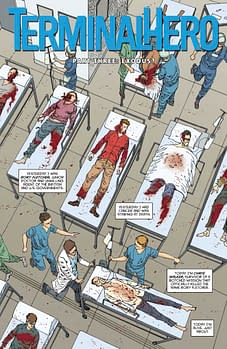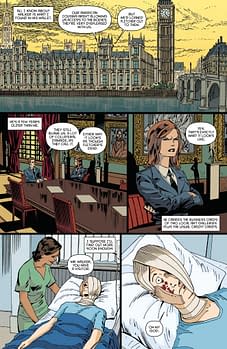Posted in: Comics | Tagged: Comics, dynamite, entertainment, Jay Spence, peter milligan, Terminal Hero
Jay Spence Interviews Peter Milligan About Terminal Hero #3
Jay Spence, writer of the Bad Kitty one shot, talks with Peter Milligan about Terminal Hero #3, both on sale now.

Peter Milligan: I think it's risky having such a potentially depressing word as "terminal" in the title but it was important. Rory — the story's hero — gets told he has terminal cancer right at the beginning and it's this that drives the story. And I liked the idea of using the "hero". Hero is a much bandied about word — especially in America, and I think it's often misused. Rory does emerge as a kind of hero, but very different from the kind of hero that comics usually portray.
JS: How long does it typically take you to build an original project like this from first outline to the complete first draft of issue #1? Do you usually focus on one story at a time or do you tend to split your time among several projects in different stages of completion?

JS: As a comic writer, do you feel you're typically very thorough and exact with describing the action and framing from panel-to-panel or do you tend to be more vague and allow the artist to translate the details on their own?

JS: On most projects, what do you feel is the biggest challenge for you when working with the editor/artist to proof and adjust the art before it's final?
PM: Sometimes the biggest challenge is time. As you know, if one person is a little late, for whatever reason, that can ripple down the chain.
For more on Terminal Hero, click here.














